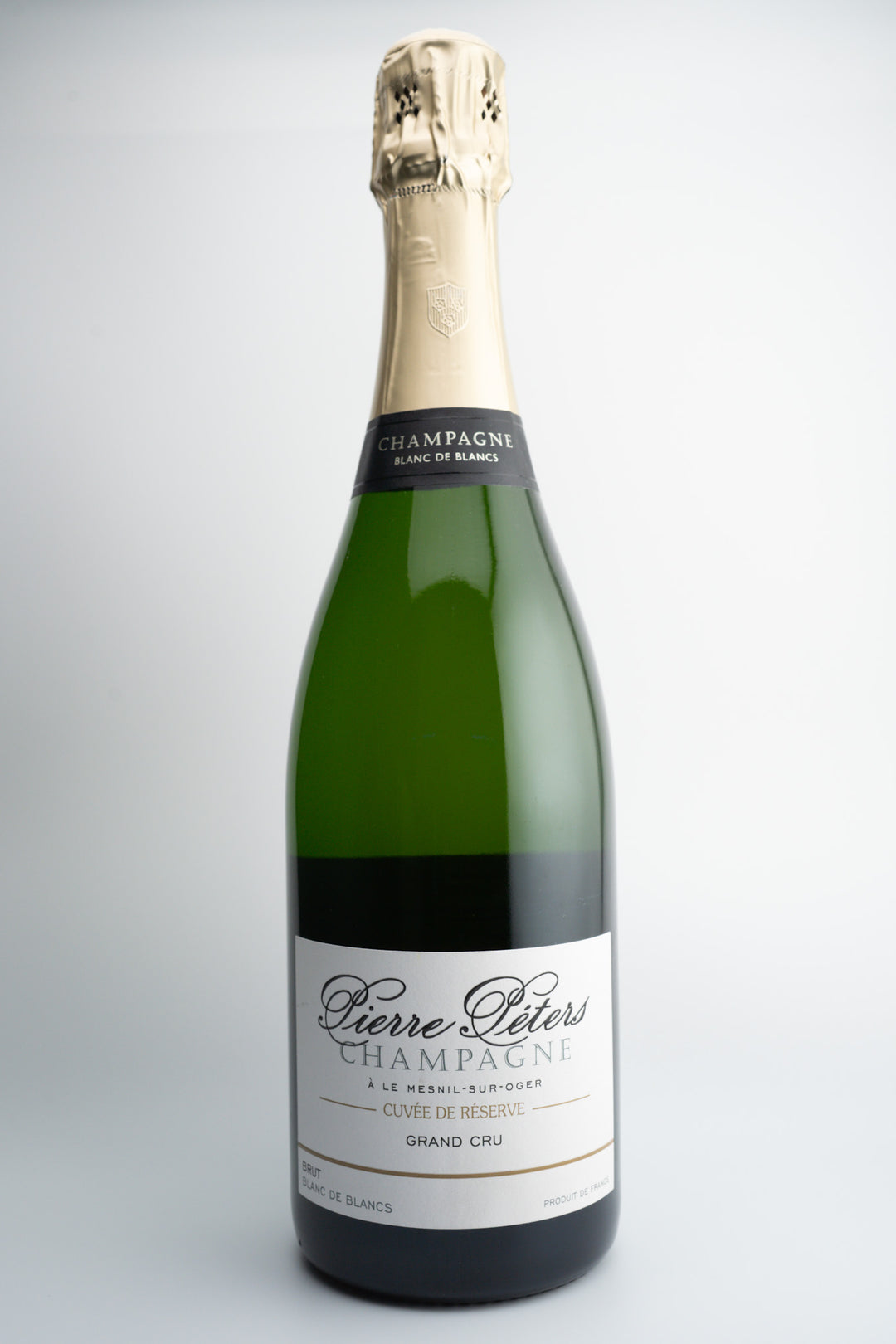
Pierre Péters 'Cuvee de Reserve' Blanc de Blancs Grand Cru Brut Champagne (NV)
Pierre Péters really needs no introduction. One of the most famous Champagne houses of late. This wine contains wine from 2018 with reserve wine from 1988, 1990, 1993 and 1995 through 2017. Aged 24+ months in bottle before disgorgement and release. 92+ Points from the best mags.
To this day, the house remains family-owned and run. The wines are made exclusively from 19 hectares (47 acres) of Chardonnay estate vines mainly located in the top communes of Le Mesnil-sur-Oger, Oger, Avize and Cramant.
Tasting Notes from Pierre Péters The wine is limpid, pale gold in color with hints of green which are typical of the Chardonnay varietal. The mousse is fine and regular with a pretty ribbon of bubbles. The first approach is both flowery and fruity, next come the notes of almond and fresh bread finishing with touches of citrus and green apple leaving a graceful impression of smoothness and freshness. The first impression is frank, associating both finesse and smoothness, and is dominated by white flower fruits (lemon and pear) and floral notes (acacia). The mid-palate is nervy and taut. The finish is persistent with pure citrus flavors and a twist of salinity
Variety 100% Chardonnay (Blanc de Blancs)
Region Champagne, France, majority from Le Mesnil sur Oger; the balance coming from the Grand Cru villages of Oger, Cramant, and Avize.
Volume 750ml
Sugar Brut (6.5 g/L)
Alcohol Volume 12%
- MUST BE 21+ TO ORDER
- SHIPPING INCLUDED WITH $250+ ORDERS
- 12 BOTTLES SHIPS FREE



